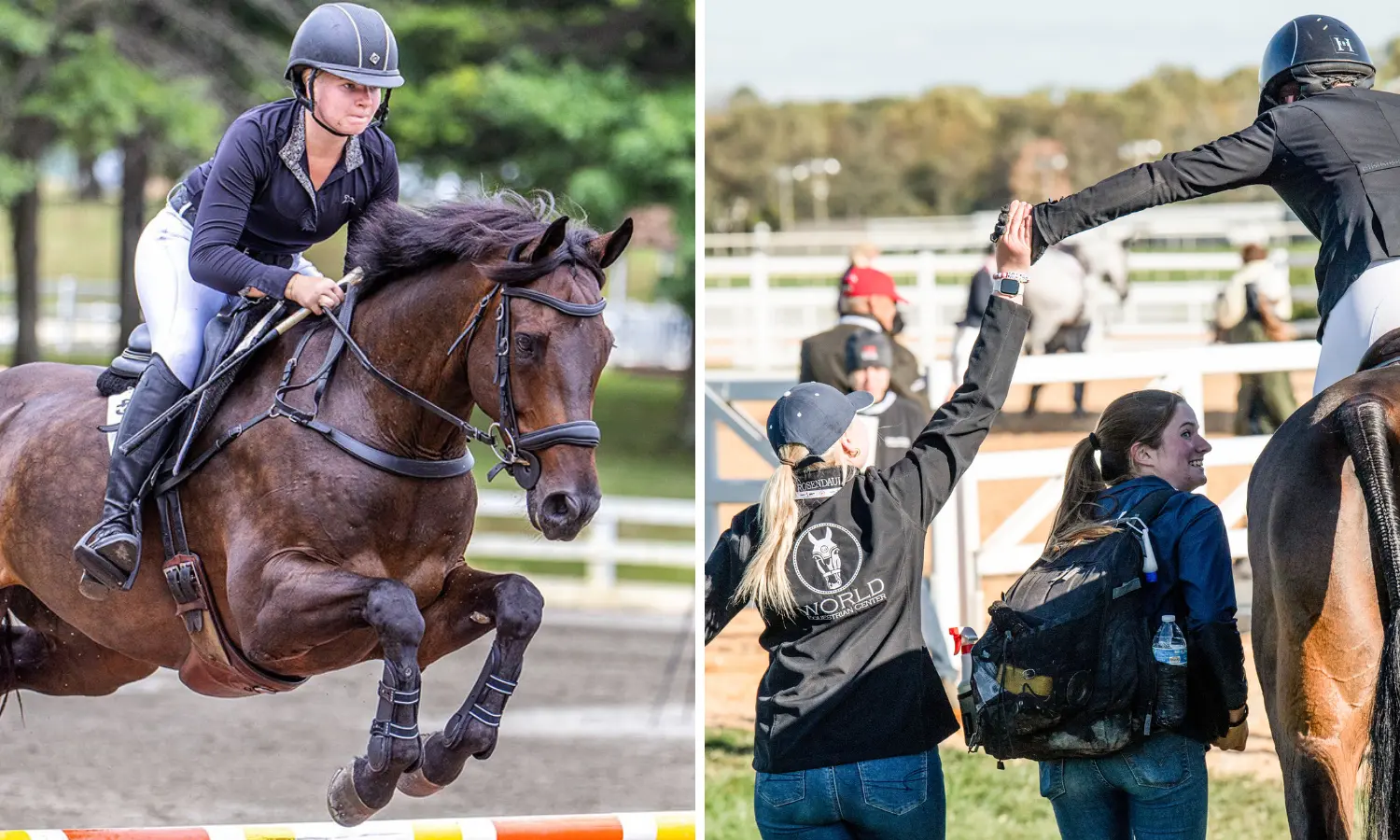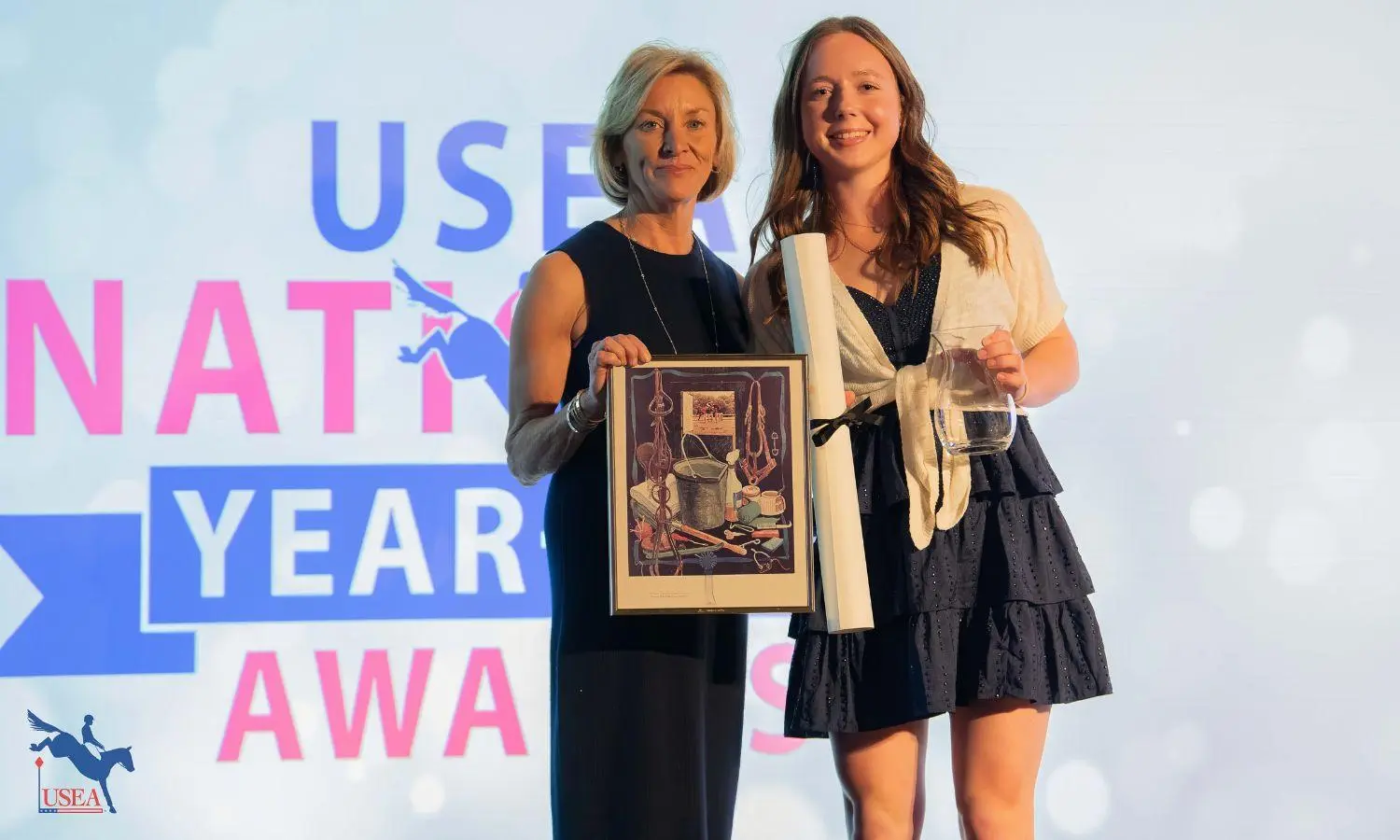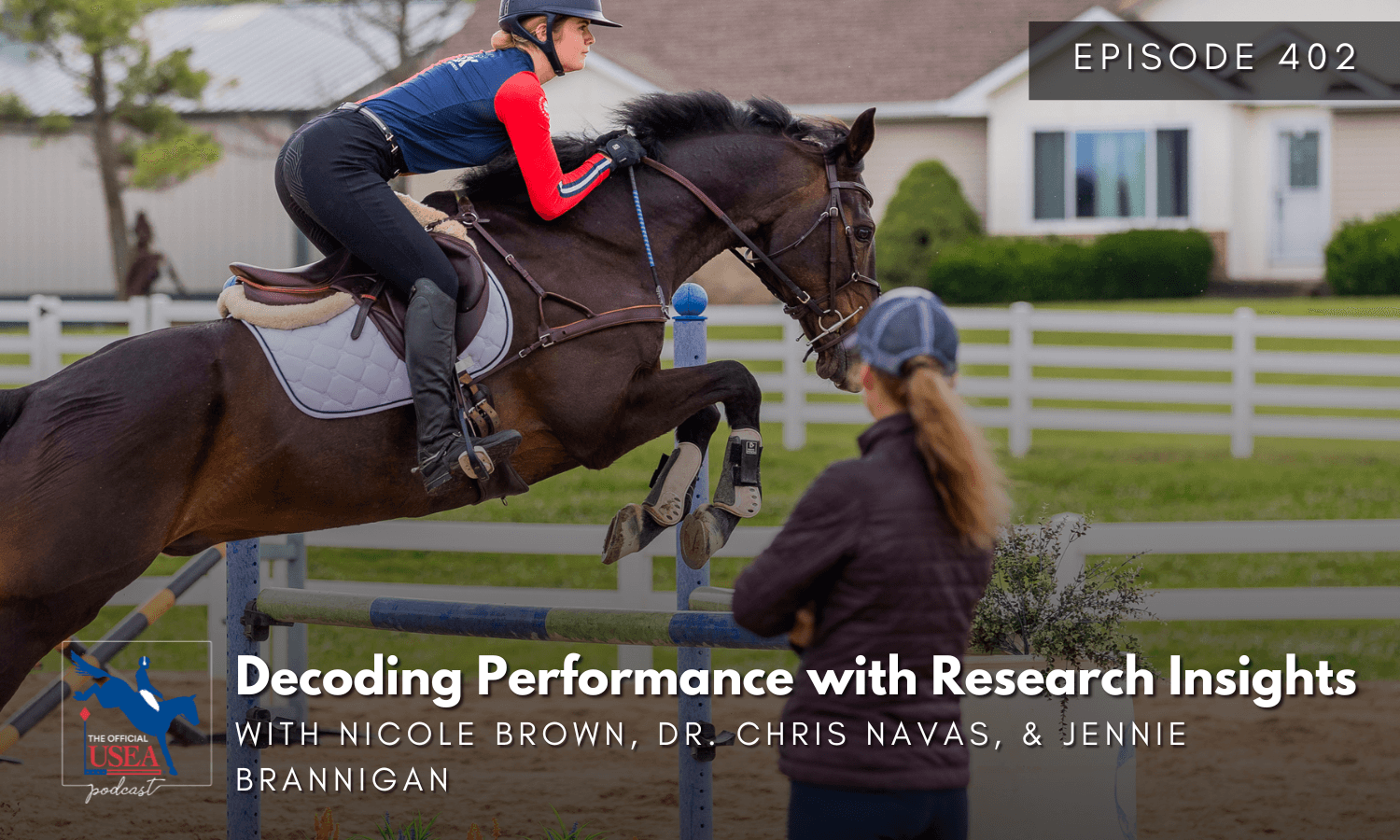Grid Pro Quo with Phyllis Dawson
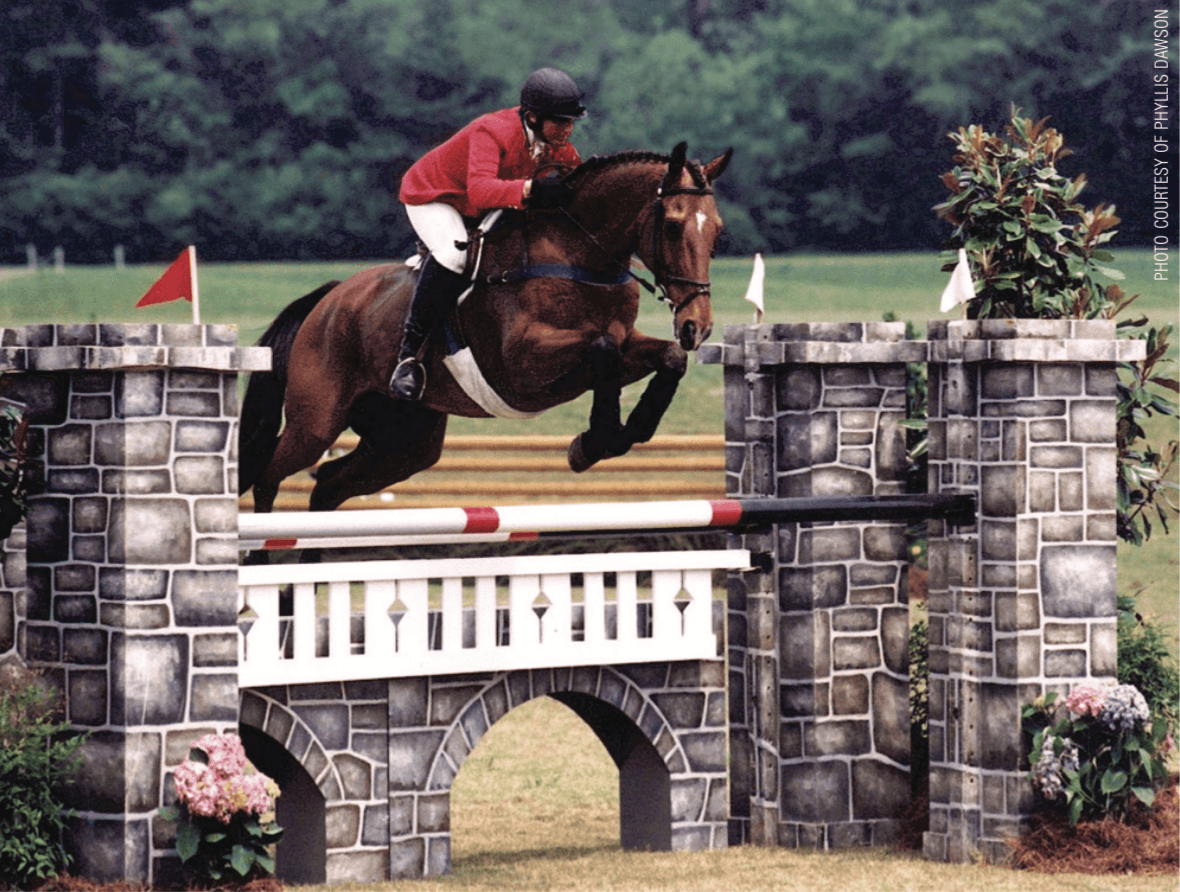
Ready to spice things up this winter training season? Do you want to use being stuck in the arena as an opportunity to fine tune your riding? In this series, we are revisiting some of our favorite Grid Pro Quo articles from Eventing USA to help you use the off-season to your advantage and keep you and your horse in tip-top shape for when it's time to get back out there. Click here to check out other past Grid Pro Quo exercises!
WHY:
Eventing has evolved over the years and the cross-country courses have become much more technical. Accuracy questions such as corners, skinnies, and angles have become increasingly difficult at the upper levels but have also become prevalent right down through the levels, with introductory accuracy questions being incorporated into Novice and even Beginner Novice courses.
Schooling methods have evolved as well, and we need to school our horses cross-country more than we might have in the past with special focus on the accuracy questions. The rider must be able to hold the horse straight in the ‘corridor’ between the two legs and the hands in order to teach the horse to hold his line and understand angles, narrows, and corners. At the upper levels, it must go a step further; the horses must learn to ‘seek the flags’ and be looking for the next element, even when the face of the fence is less than four feet wide, or set at an extreme angle.
Repetition of schooling these questions, gradually increasing the difficulty as horse and rider become proficient, is the key to developing these skills. Although there is no substitute for getting out on the cross-country course, a lot of this schooling can be done in the arena by setting simulated cross-country questions with show jumps. I generally have my students jump some sort of accuracy exercise in every show jump school. I want these accuracy questions to become routine for both the horses and riders, so they become easy for them. One excellent way to do this is to incorporate them into grids – what better way to make corners and narrows become "no big deal" to both horses and riders? And for those who don’t go south in the winter, it can be a fun way to break up the monotony when you are stuck in the indoor arena.
HOW:
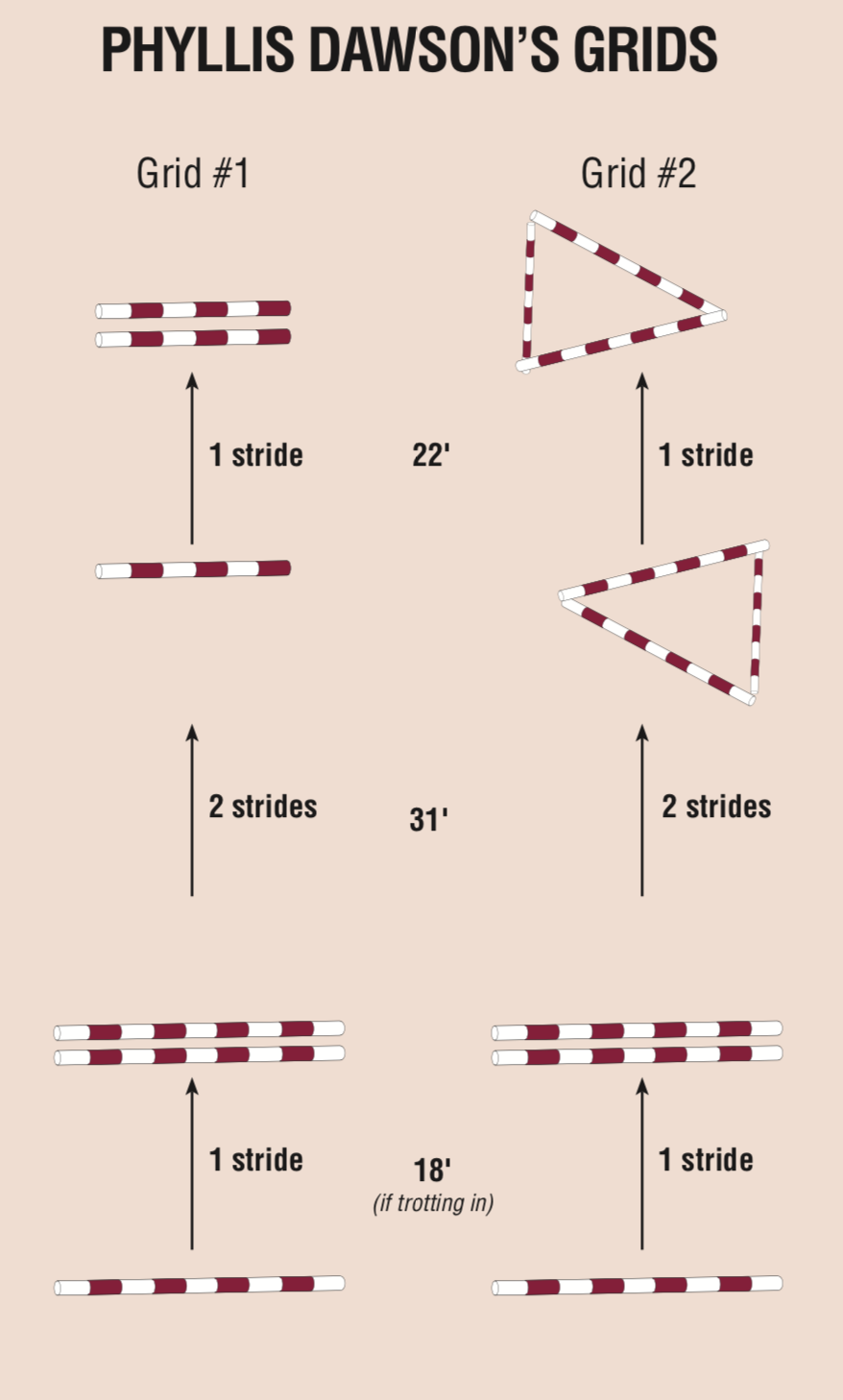
Before attempting to use these accuracy questions in gymnastics, both horse and rider should be confident at the height you are schooling and able to comfortably jump through more straightforward gymnastic lines. The rider should also have a basic understanding of using the aids to hold the horse straight on the flat. But even for those with relatively little experience, these grids can be modified with the help of guiding rails to be appropriate even for Beginner Novice participants.
I warm up the horses and riders with a simple gymnastic. They start with a single cross-rail or small vertical and then add an oxer one stride away. After they are jumping this successfully, I will add another oxer, set at a two-stride distance. The gymnastic can be approached in either trot or canter. For greener horses and riders, trotting into the grid is usually easier but for more experienced combinations, cantering in is an opportunity to work on the quality of the jumping canter.
I will adjust the distances according to whether it is trot or canter and also for the stride length and level of the horse. Especially in the introductory phase, we want the gymnastic distances to be inviting and easy to help produce a confident and consistent jump. If trotting in, I would generally start with a distance of 18 feet for one stride between the first two jumps, and about 31 feet for two strides between the second and third. If I were cantering in, I would use 20 feet and 32 feet as a starting point. If the fences get set higher or the horses find the striding difficult, I would adjust these distances as needed.
Next is where it gets fun. Once the horse and rider are doing the three fences easily, I will replace the last oxer with a corner. I will be sure it is not too wide to start with, and keep the height easily within the horse’s comfort zone. I will use a rail as a ‘wing’ on the narrow end of the corner to assist in holding the horse straight. If they negotiate it easily, I can gradually widen the corner to make it more challenging, being careful to keep the question appropriate for the level of the horse and rider. With a higher level combination where the corner gradually becomes quite wide, a barrel or jump standard can be positioned inside the wide end of the obstacle to make sure the horse does not try to jump into the middle of it.
I like this as a method of introducing a corner to the riders; I find many riders, when first asked to jump a corner, get overly aggressive and end up chasing their horses at it rather than keeping them organized and balanced. Introducing the corner in a gymnastic line prevents this from happening.
When horse and rider are jumping the gymnastic with the corner with ease, a second corner may be added approximately 22 feet (for one stride) after it. Again, guiding rails at the point help the horse understand how to hold his line. For the horses and riders with more experience, the next step would be to put the guiding rails on the ground, and then if they are jumping straight, to ultimately remove them altogether.
Another variation on this theme is to use narrow fences instead of corners. Again, guiding or balancing rails to help the horse stay straight should be used, and can then be gradually removed for more experienced horse and rider pairs. There are endless possibilities; once horse and rider are proficient, then any gymnastic or grid you might build with regular jumps can be made with narrow fences instead. You can also incorporate corners and narrows into the same gymnastic line.
Throughout, the guiding principles should be to make sure both horse and rider are confident and competent over straightforward fences before introducing the accuracy elements. Use wings or guiding rails to ensure success. Adjust the difficulty of the question, the height of the fences, and the distances according to what the individual horse needs. Be sure to use these gymnastics in a way to show the horse and rider what they can do, not what they can’t. Following these guidelines, you can use grids to practice cross-country questions such as corners and narrows until they become no big deal!
About Phyllis Dawson
Phyllis Dawson competed at the highest levels of the sport for more than 30 years and had success on many different horses, most of whom she trained herself. She represented the United States at the 1988 Olympic Games in Seoul on Albany II, finishing 10th individually. Although no longer competing at the Advanced level, Dawson is continuing this philosophy while concentrating on training and producing top quality riders and horses at her farm Windchase in Purcellville, Virginia. To learn more about Dawson and Windchase, visit www.teamwindchase.com.
This Grid Pro Quo first appeared in Volume 47, Issue 1 of Eventing USA.

